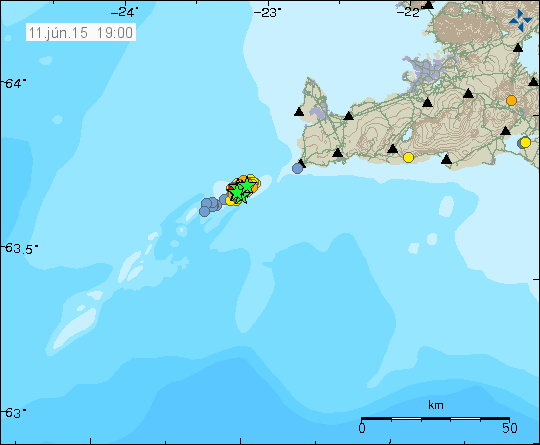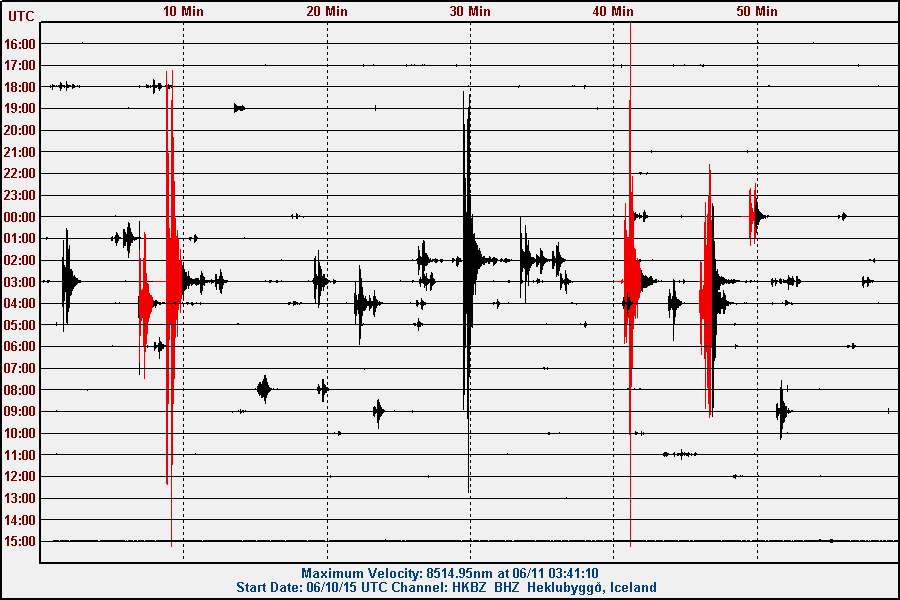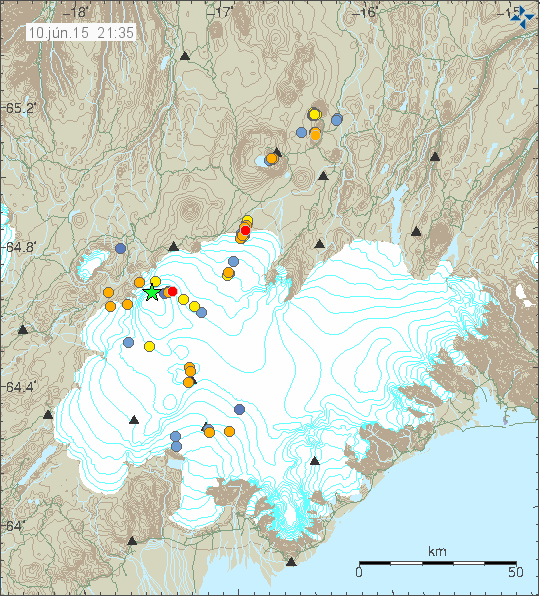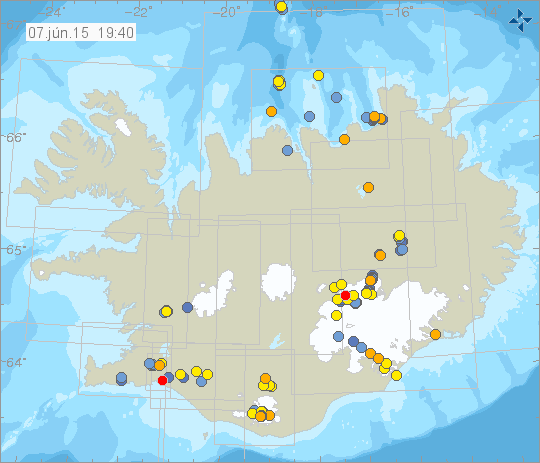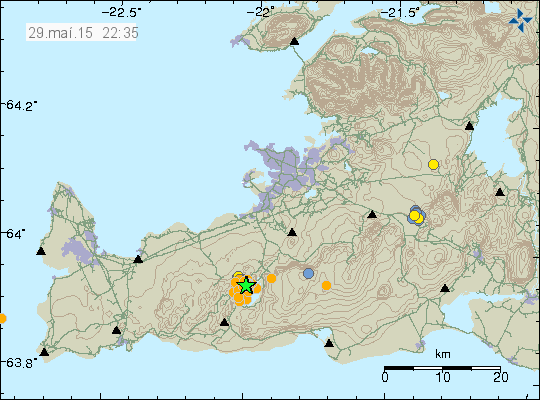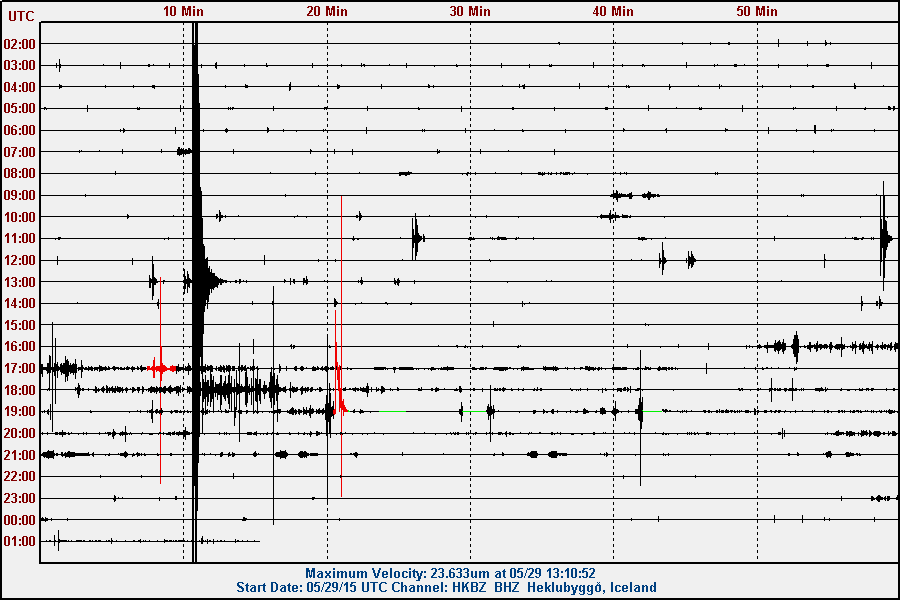Even if the eruption in Holuhraun and Bárðarbunga volcano is over, there is no shortage of activity in Bárðarbunga volcano. With deepest earthquake in past 48 hours having the depth of 28,6 km and earthquakes don’t get a lot deeper than this in Bárðarbunga volcano. At this depth earthquake activity happens due to magma movements rather than tectonic stresses.
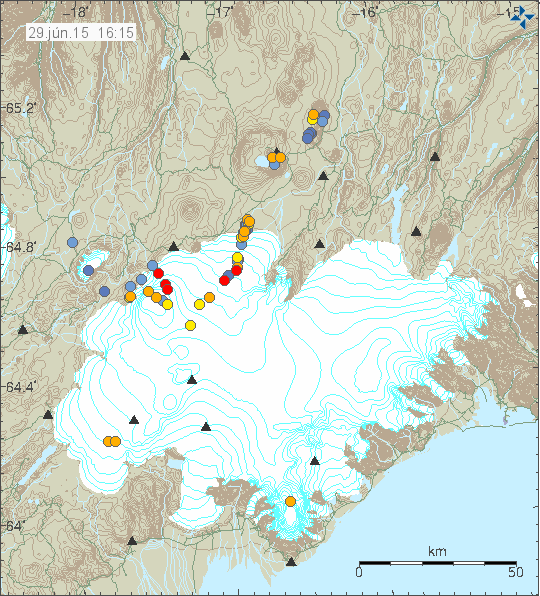
Earthquake activity in Bárðarbunga volcano (red dots). Copyright of this image belongs to Iceland Meteorological Office.
Earthquake activity in Tungnafellsjökull volcano
Since the end of the eruption and any major activity in Bárðarbunga volcano. Earthquake activity in Tungafellsjökull volcano has not stopped as expected. The earthquake activity continues at low levels and at great depth. With deepest earthquake in last 48 hours at 26,2 km.
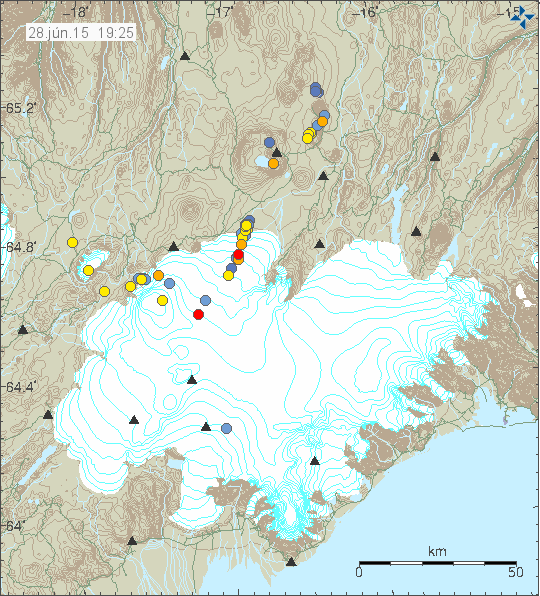
Earthquake activity in Tungnafellsjökull volcano (yellow / orange dots). Copyright of this image belongs to Iceland Meteorological Office.
It is unclear what is going on in Tungnafellsjökull volcano, it is clear that dyke intrusion is taking place at depth, if and when that might result in a eruption is not clear at this moment. This might lead to an eruption or it might not. It is impossible to know at this moment since Tungnafellsjökull volcano has no recorded or documented history of volcano eruptions in historical times.
Donations: Please remember to support my work with donations or by using Amazon. Thanks for the support. 🙂

